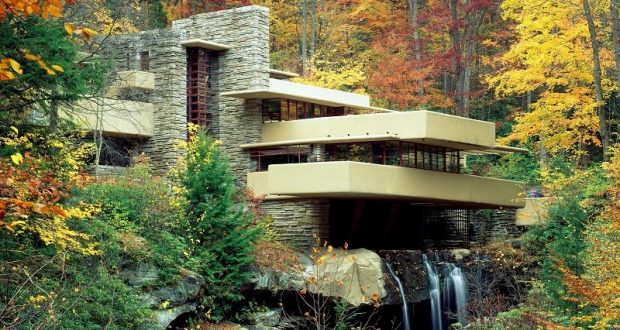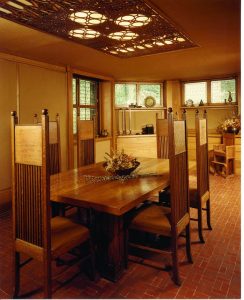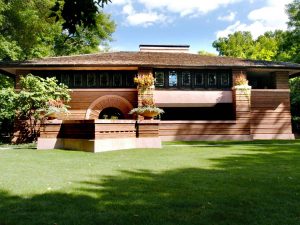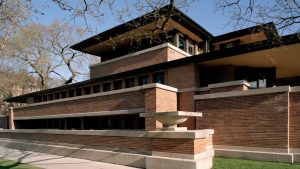FROM THE EDITOR: Sal Maccarone will be taking a brief hiatus from article writing at SNO. In his absence, he has asked us to republish some of his more popular articles from the past. This week: Frank Lloyd Wright. Enjoy!
Originally published February 13, 2021.
By Sal Maccarone
Historians study architectural style because it closely reflects the ideals and beliefs of the builders. Distinctive and identifiable artistic form in architecture also helps us to understand the mood of an era. The particular styles of a past culture, or an artistic movement speak volumes about the individuals involved.
Styles evolve, and change because circumstances evolve, and change. Beginning with the industrial revolution there have been many social, economic and technological changes which have raised standards. As a direct result, those changes effected architecture. New materials, and building techniques have enabled us to construct things never before possible; such as, skyscrapers and long span suspension bridges.
The transition from the unhurried pace of the 19th century to the speed and mobility of the 20th century was known as the Progressive Era (1890’s – 1920’s). During that time, the state of architecture in this country was very confused. The styles of our buildings were all borrowed from trends that began in Europe (e.g. Victorian, Italianate, Tudor). This masquerade was especially evident when it came to residential design. During this era, the time had finally come for America to have a style to call its own!
Different from most of his contemporaries, Frank Lloyd Wright (1867-1959) embraced social and technological changes. As both an architect and interior designer he believed that a structure should be in harmony with itself, humanity, nature and especially, the environment. In other words, all aspects of a building including the materials, furnishings and landscape, should stand as a unified whole. This simple philosophy which he called, “Organic Architecture” also became the foundation of what is known as the Prairie School Style.
Prairie Style architecture began in Chicago, with Frank Lloyd Wright along with a few other architects. The long horizontal lines of the vast Midwestern prairies became a prevalent feature of this new style; hence the name was coined. Coinciding with the same values as the Craftsman movement, the architectural group professed purity of design, good craftsmanship and the use of natural materials.
Some of the distinguishing features of the Prairie Style include: low hipped roofs with exaggerated overhangs, (especially the eaves); long windows which are grouped together; open interior spaces; a very minimal use of ornamentation, and of course; the use of long horizontal lines. It is interesting to note that the Ranch Style home which is so prevalent here in California is a direct descendant of the Prairie Style.
Frank Lloyd Wright designed and/or built over one thousand buildings during his long career. In addition to his many famous houses he also designed entire cities, school campuses, office buildings, hotel properties, church buildings, art museums and believe it or not, skyscrapers. Twenty-seven of his buildings are now designated as National Historic Landmarks. In 1991 the American Institute of Architects recognized his contribution and named him, “the greatest American architect of all time”. And, his design for the house in Pennsylvania that he called, “Fallingwater,” is considered as the best example of pure American architecture. When Mr. Wright was asked if there was a secret to his beautifully integrated designs, he said, “no secret, just study nature, love nature, stay close to nature and it will never fail you.”
Here is a link to a great documentary about Frank Lloyd Wright and the Prairie Style: https://www.youtube.com/watch?v=FpYhvn97Dic
Sal Maccarone








